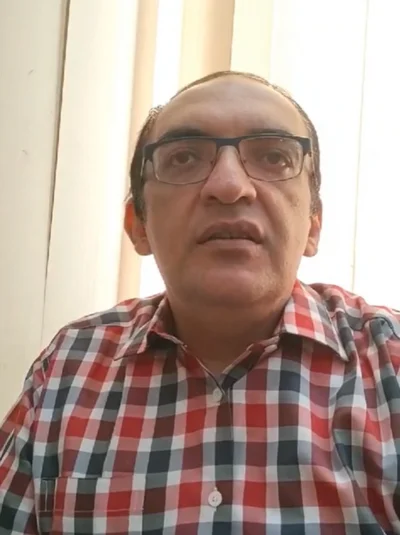Scrolling through an endless feed of captivating stories on your phone has become second nature to millions of readers. Platforms that blend social networking with creative writing—chief among them, Wattpad—have reimagined how literature is consumed, shared, and even monetized. Naturally, entrepreneurs wonder what kind of investment it takes to replicate that success. Rather than guessing, this in-depth guide unpacks every layer of expenditure, illuminating the Wattpad app development cost landscape from ideation to post-launch growth. While headline figures matter, we’ll dive deeper into why costs vary and how to plan a budget that fits both your vision and the market.
Why Social Story Platforms Thrive

Wattpad’s success proves that storytelling at scale can be both influential and profitable. Readers devour serialized fiction; writers gain audience validation; publishers scout for fresh IP. The result is a vibrant ecosystem where user-generated content fuels an engagement loop. If you’re exploring story sharing app development, remember that the model rests on three key pillars:
- Network Effects – Every new writer attracts fresh readers, and vice versa.
- Democratized Publishing – Low barriers to entry turn casual readers into content creators.
- Data-Driven Insights – Analytics guide content recommendations, ad placements, and even book-to-screen adaptations.
Understanding these elements helps you map features to your budget—an essential step before calculating the cost to build app like Wattpad.
Market Benchmarks and Investment Realities

Globally, the online reading market is projected to surpass $5 billion by 2028, with mobile devices accounting for most user sessions. Venture capital continues to chase narrative IP: Wattpad itself merged with Naver’s Webtoon in a deal valued at roughly $600 million. Today, investors scrutinize burn rates earlier, making it essential to present realistic spending forecasts—especially around book reading app development.
Core Feature Set and Their Budget Impact

Below is a snapshot of the feature clusters that significantly impact total spend. Each cluster acts as a “budget lever”; increasing complexity pushes the Wattpad app development cost higher:
| Feature Cluster | MVP Scope (USD) | Full Scope (USD) | Why Costs Rise |
|---|---|---|---|
| User Accounts & Profiles | $4–6k | $8–12k | Social logins, profile customization |
| Writing & Draft Tools | $6–10k | $12–18k | Rich-text editors, autosave, version history |
| Discovery & Search | $5–8k | $10–15k | AI recommendations, advanced filtering |
| Reading Interface | $6–9k | $12–20k | Night mode, offline reading |
| Community Interactions | $4–7k | $10–14k | Inline comments, likes, reading clubs |
| Monetization Features | $3–5k | $10–25k | Ads, coins, subscriptions |
| Analytics Dashboard | $4–6k | $8–12k | Author insights, reader metrics |
| Admin CMS | $5–7k | $8–12k | Moderation tools, content reporting |
| Security & Compliance | $3–5k | $6–10k | Encryption, age restrictions, GDPR readiness |
Adding these ranges brings an MVP estimate near $40k–$60k, while a full-featured build can exceed $120k before factoring in marketing and maintenance costs.
The Role of UI/UX Excellence

Fans praise Wattpad’s immersive dark mode, swipe navigation, and minimal friction between reading and interaction. Achieving a similar level of polish means allocating 15–20% of your budget toward design. This includes:
- User Personas & Storyboards – Tailoring flows for writers vs. readers.
- Interactive Prototypes – Validating fast-scrolling, quick-tap behaviors.
- Micro-Interactions – Subtle animations that enhance perceived quality.
Neglecting design often results in poor retention, which ultimately drives up your marketing costs to retain users.
Choosing the Right Technology Stack

Debating between native (Swift/Kotlin) and cross-platform (Flutter, React Native) technologies is crucial. Cross-platform options can reduce development costs by 25–30%, but may compromise performance in areas like real-time text editing.
Backend options include:
- BaaS (Firebase, Supabase) – Ideal for early-stage apps; be cautious of vendor lock-in.
- Custom Backend (Node.js, Python + GraphQL) – Greater flexibility for AI-based features.
- Microservices Architecture – Necessary for scaling to millions of monthly users.
Each decision affects your cost to build app like Wattpad differently. For instance, a microservices architecture can add tens of thousands of dollars in DevOps and maintenance.
Content Delivery, Storage, and Digital Rights

While stories are text-heavy and relatively light in terms of file size, scale still matters. Costs arise from:
- Database Management – Metadata for millions of users and stories.
- Cloud Storage – Cover images, audio files for narrated versions.
- CDNs – Ensuring low latency for users across different geographies.
Rights management becomes critical once monetization begins. If users purchase or subscribe to premium content, a DRM system may be required. Third-party DRM services can cost upwards of $500/month, depending on traffic and use case.
Development Team and Hourly Rates

| Role | US / Western Europe | Eastern Europe | South Asia |
|---|---|---|---|
| Product Manager | $90–120/hr | $50–70/hr | $35–50/hr |
| UI/UX Designer | $70–100/hr | $40–60/hr | $25–45/hr |
| Mobile Developer | $80–110/hr | $45–65/hr | $30–50/hr |
| Backend Developer | $85–115/hr | $50–70/hr | $35–55/hr |
| QA Tester | $50–70/hr | $25–40/hr | $15–30/hr |
Choosing a mixed or offshore team can significantly reduce your Wattpad app development cost without compromising quality—especially when strong documentation and time zone overlap are maintained.
Timeline by Development Phase

- Discovery (2–4 weeks) – Stakeholder interviews, requirement definition.
- Design Sprint (4–6 weeks) – UX wireframes, UI components, user testing.
- MVP Development (12–16 weeks) – Building core features for a soft launch.
- Iteration & Scaling (Ongoing) – Feature enhancements, AI integrations.
- Infrastructure Scaling (Post-launch) – Caching, load balancing, analytics.
Delays or timeline compression can influence your budget. Faster timelines often demand more engineers, raising the overall cost by 15–20%.
Cost by Region

| Region | MVP Estimate | Full Build Estimate |
|---|---|---|
| North America | $120k+ | $250k+ |
| Western Europe | $90k+ | $200k+ |
| Eastern Europe | $60k+ | $140k+ |
| South Asia | $40k+ | $100k+ |
These ranges reflect averages across the book reading app development market. Tax incentives or regional programs can also reduce development costs in some countries.
Ongoing and Hidden Costs

- App Store Fees – 30% cut on in-app purchases unless negotiated.
- Content Moderation – AI + human reviewers, often $3k–$5k/month.
- Customer Support – Live chat, help desk software.
- Cloud Hosting – Unexpected spikes from viral content.
- Security Audits – Annual penetration tests ($8k–$15k on average).
Ongoing operational costs must be considered alongside your launch budget.
Monetization Strategy and ROI

- Freemium + Ads – Simple to implement; CPMs vary by content type.
- Coins + Microtransactions – Flexible for users; lucrative at scale.
- Subscription Tiers – Higher margins but requires consistent content delivery.
- Licensing and Publishing Deals – Potential for exponential returns if stories go viral.
Monetization choices shape how quickly you recover the cost to build app like Wattpad and determine future reinvestment capacity.
Cost-Saving Tips

- Modular Development – Enable new features without rewriting the base.
- Open-Source Tools – Save time on text editors, libraries, and UI kits.
- Staged Monetization – Launch without payments and add them post-validation.
- Automated QA – Reduces the burden on human testers and speeds up releases.
These techniques help optimize your initial investment without compromising user experience.
Conclusion
Building an app that captures the storytelling magic of Wattpad requires careful budgeting, strategic planning, and the right development team. Whether you’re building an MVP or aiming for a full-scale launch, the Wattpad app development cost typically starts at $40k–$60k and can reach $200k+ depending on your vision. Understanding platform needs, avoiding common pitfalls, and planning for long-term scalability will put you in the best position to succeed.
Armed with this knowledge, you’re ready to bring your vision to life—whether it’s empowering aspiring authors, entertaining global readers, or capturing the next viral fiction franchise.
Contact us today for a free consultation. Our expert team will guide you from concept to launch and beyond.
FAQ's
1. How Much Does It Cost to Develop an App Like Wattpad?
The cost to develop an app like Wattpad typically ranges from $40,000 to $60,000 for an MVP, and can exceed $120,000 for a fully-featured version. Costs depend on features, tech stack, design, and developer location.
2. What Features Should Be Included in a Wattpad-style App?
A story-sharing app should include user profiles, writing and publishing tools, personalized reading modes, commenting features, AI-based story recommendations, and monetization options like ads or premium content access.
3. Can I Build a Wattpad-like App on a Low Budget?
Yes. By starting with an MVP, you can keep the Wattpad app development cost lower. Prioritize core features like story uploads and basic reading functions, then scale with advanced features as the app gains traction.
4. How Long Does It Take to Develop a Book Reading App Like Wattpad?
Development time varies: an MVP can take 4–6 months, while a full-scale book reading app development project may extend to 8–10 months, depending on team size, tech choices, and scope complexity.
5. How Can I Monetize a Wattpad-like App?
You can monetize through in-app ads, subscription plans, paid story unlocks (coin systems), or even IP licensing. A balanced monetization strategy ensures consistent revenue while maintaining user engagement.














